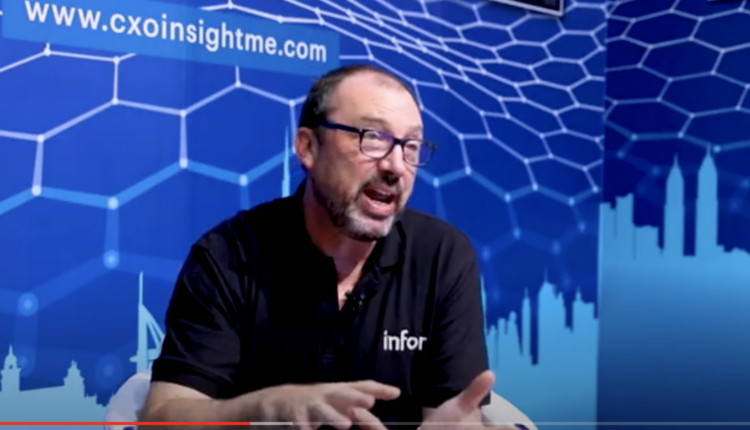By Phil Lewis
Automation is complex – especially in the manufacturing industry. Will the automation trend continue to accelerate? Infor’s Phil Lewis looks at some examples of smart connected factories.
The adoption of automation is one of the unexpected game-changers that the COVID-19 pandemic has accelerated in manufacturing. The impact is nowhere more robust than on the shop floor.
Manufacturers placed their factories in less-developed countries with low labor costs. They employed, and are still stuck with, a geographic footprint for production that was driven by labor arbitrage around the globe, rather than by factors such as proximity to customers or ecological considerations. In fact, supply chains expanded with goods being produced farther and farther from the customers who buy them.
But the pandemic, and several other factors, changed all that. With the amount of disruption in the past two years, happening at an accelerating pace, the only constant now is change. The need to reduce delays and transport costs, as well as the pursuit of more sustainable production has led organisations to adjust their manufacturing footprints.
What does that mean? Since the 1980s, the global manufacturing business model has been centered around locating physical factories in countries where labour costs were cheap. That made sense when global supply chains and just in time sourcing were efficient and cost effective. Now, with shipping costs through the roof, and both containers and spots on ships hard to come by, companies are recognising the benefit of reduced transport and moving manufacturing closer to customers – but that requires a rethink of how these factories operate.
Thankfully, the advancement of digitalisation and automation, robotics, machine learning, and advances in manufacturing techniques have increased manufacturers’ ability to create smaller, more automated and much smarter factories located in countries and cities closer to the customer. Reshoring and back-shoring is picking up steam as technology helps companies reduce labour costs via automation.
Essentially, automation is enabling manufacturers to build new smart factories in developed countries. Automation helps factories operate with far less unskilled (mainly human) resources. Less labour means less labour costs. Factories operating out of high-cost manufacturing hotspots such as Germany and Japan are largely automated for production and deploy far fewer employees, relying mostly on skilled engineers to maintain the machinery and the equipment. In addition, fully standardised, digital, and automated processes can be much quicker than processes that involve human interaction and manual tasks.
Increased automation makes locating facilities in high-cost but also highly educated countries a smart move. For example, a manufacturing execution system (MES) for the coordination of production machinery can automate the task of machine maintenance scheduling. But decisions still need to be made by people who are responsible for the outcome. These human decision points stand in the way of the complete “lights-out” factory, but not in the way of progress. The more automated the factory becomes, the more flexibly it can react to market changes.
As more and more manufacturers embrace automation, sustainable practices and the nearshoring of facilities, smart factories, which utilise not only automation but other Industry 4.0 technologies and processes, are becoming increasingly common. Infor has partnered with Deloitte to open The Smart Factory @ Wichita on the Innovation Campus of Wichita State University to help manufacturers explore use cases for new technologies and, ultimately, to transform their facilities into smart factories.
Many companies have already begun to integrate Industry 4.0 technologies, including artificial intelligence, into their business processes. As the world’s largest manufacturer of multidirectional forklifts, Infor customer Combilift has 60,000 unique trucks in operation to meet each client’s industry-specific needs. To help ensure that trucks, which need service, receive the right parts for the job, Combilift utilised Infor’s Coleman AI solution in combination with its Infor CloudSuite Industrial ERP system. This helped automate the process of generating the parts lists for specific jobs, improving the efficiency and accuracy of the recommendations, scaling the service quote process, reducing stress on staff and ensuring a first-time fix for clients.
Automation is complex, and there’s a lot of work to do to lay the foundation at any facility. The most urgent question for most production companies is not how to implement the latest technology; most have pilot projects and implementations for data analytics, digital manufacturing technologies or artificial intelligence.
The key challenges are 1) how to bring all these different technologies together and 2) how to roll them out on the entire production environment. Replacing old technologies on a global scale often means a change in workflows and measurements. This change can be challenging. Standardising operations at all production sites, being able to monitor the same key performance indicators (KPIs) in the same way and automating well-defined processes across all operations are the first areas to address.
Phil Lewis is the Senior Vice President of Solution Consulting, International, Infor


